Original | Odaily Planet Daily ( @OdailyChina )
Author|LiaoLiao
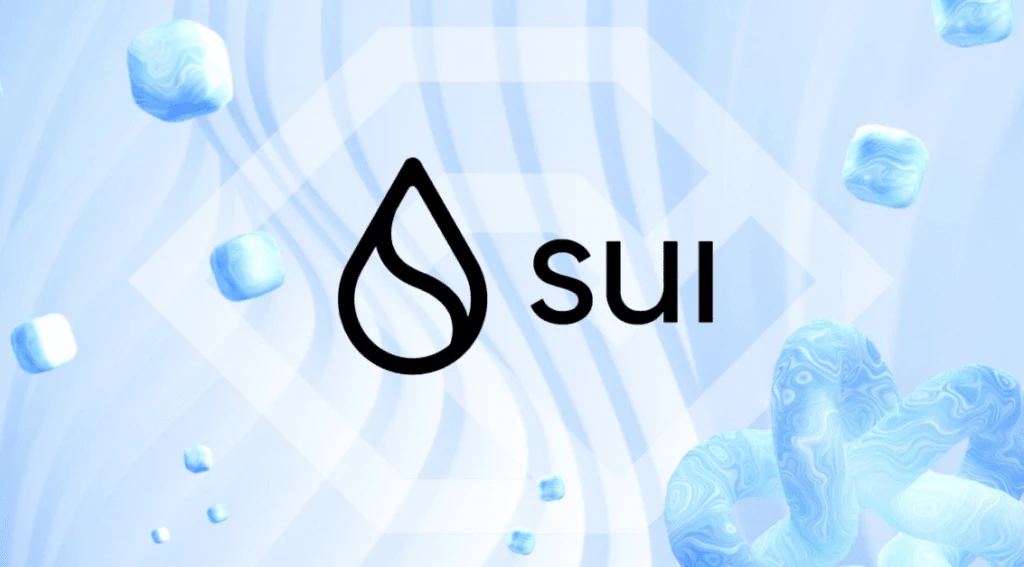
On August 7, Grayscale announced the launch of two new trust funds, Grayscale Sui Trust and Grayscale Bittensor Trust. Grayscale Sui Trust will only invest in Sui network native token SUI. This is the second time that Grayscale has chosen to launch a special investment product around a single Layer 1 after popular Layer 1s such as Bitcoin, Ethereum, Solana, and Filecoin.
At the same time, the price of SUI also saw a rapid rise, doubling in a single week, reaching a peak of 1.185 USDT. The strong secondary performance has made many community investors begin to wonder whether Sui can play a role similar to Solana in the previous cycle and lead Layer 1 to a new round of breakthroughs .
In the eyes of many people, SUIs recent strong performance can be mainly attributed to Grayscales favor, but we tend to believe that Grayscales choice of Sui is only a result rather than a cause. The fundamental reason for Suis rise is that the fundamentals of the ecosystem are continuing to improve at a very fast pace, and this development trend has become increasingly difficult to be ignored by the market - the improvement in fundamentals was eventually transmitted to the coin price, and this sign was captured by Grayscale in advance, and its actions in turn further promoted the development of the original trend.
Core data, strong outbreak
Earlier in July, Sui Foundation officially released the first DeFi business development report in the history of the ecosystem, The State of Sui DeFi.
The report explains the natural adaptability of Sui network architecture and Move language to DeFi business; summarizes the achievements of the DeFi ecosystem since the launch of the mainnet, including network activity, liquidity scale, application ecosystem categories, etc.; in addition, the report also specially selects a number of native projects with the most representative and growth potential in the Sui ecosystem, which can provide a more reference interactive map for users who are interested in experiencing the ecosystem.
Odaily Note: Since the report officially released by Sui only covers up to March 2024, in order to present more timely data conclusions, we will re-verify Suis report card based on the latest data below.
With the emergence of various emerging concepts of Layer 1 and Layer 2, the competition in the underlying network is becoming increasingly fierce. However, against such a backdrop, Sui still delivered a very impressive answer.
The report summarizes the data performance since the launch of Sui mainnet in three major sections: liquidity, trading volume, and capital volume. Liquidity mainly focuses on the total TVL scale of Sui ecosystem, which represents the depth of DeFi market in Sui ecosystem. Trading volume mainly focuses on the spot and derivative trading volume of Sui ecosystem, which represents the activity of DeFi market in Sui ecosystem; capital volume mainly focuses on the asset categories of Sui ecosystem, which represents the asset richness of DeFi market in Sui ecosystem.
First, let’s look at the most valuable liquidity data. DefiLlama data shows that as of August 14, the total TVL of Sui Ecosystem was approximately US$626 million. Although there has been a certain decline since the overall market correction (peak of US$750 million), the overall growth rate in 2024 still remained over 100%.
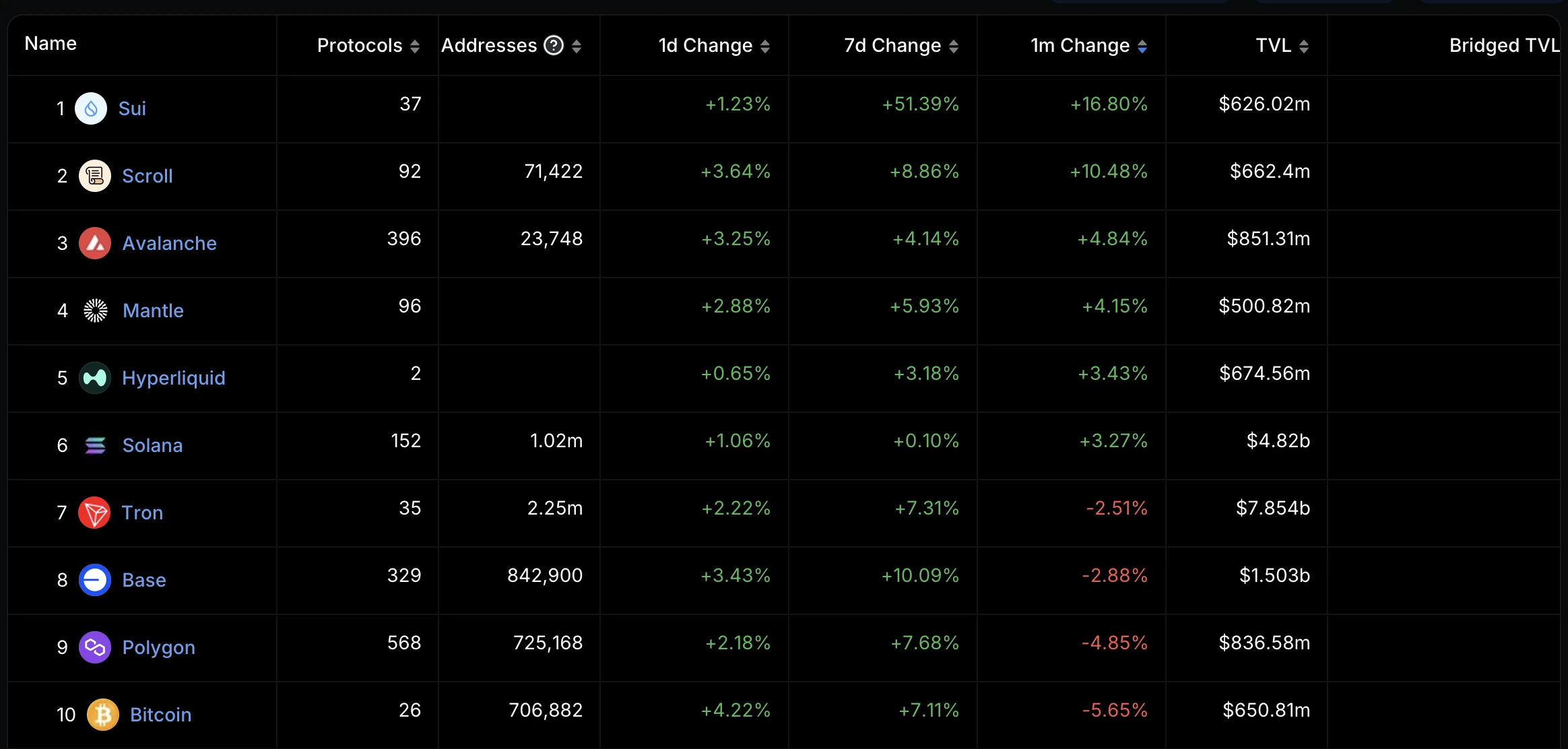
As shown in the figure above, if we compare the TVL fluctuation trend of Sui Ecosystem in 2024 with other mainstream Layer 1/Layer 2, it is not difficult to see that Suis growth trend is also the strongest. Among all mainstream networks with TVL exceeding US$500 million, Sui Ecosystem has topped the list in terms of growth in the past month, far better than many other popular networks.
In addition, Grayscale also mentioned another indicator that is more valuable for investment reference - the market value/TVL ratio of the Sui network is only higher than Tron among all mainstream networks, and far lower than other popular networks. This means that the current SUI token has a higher investment cost-effectiveness in the Layer 1/Layer 2 track.
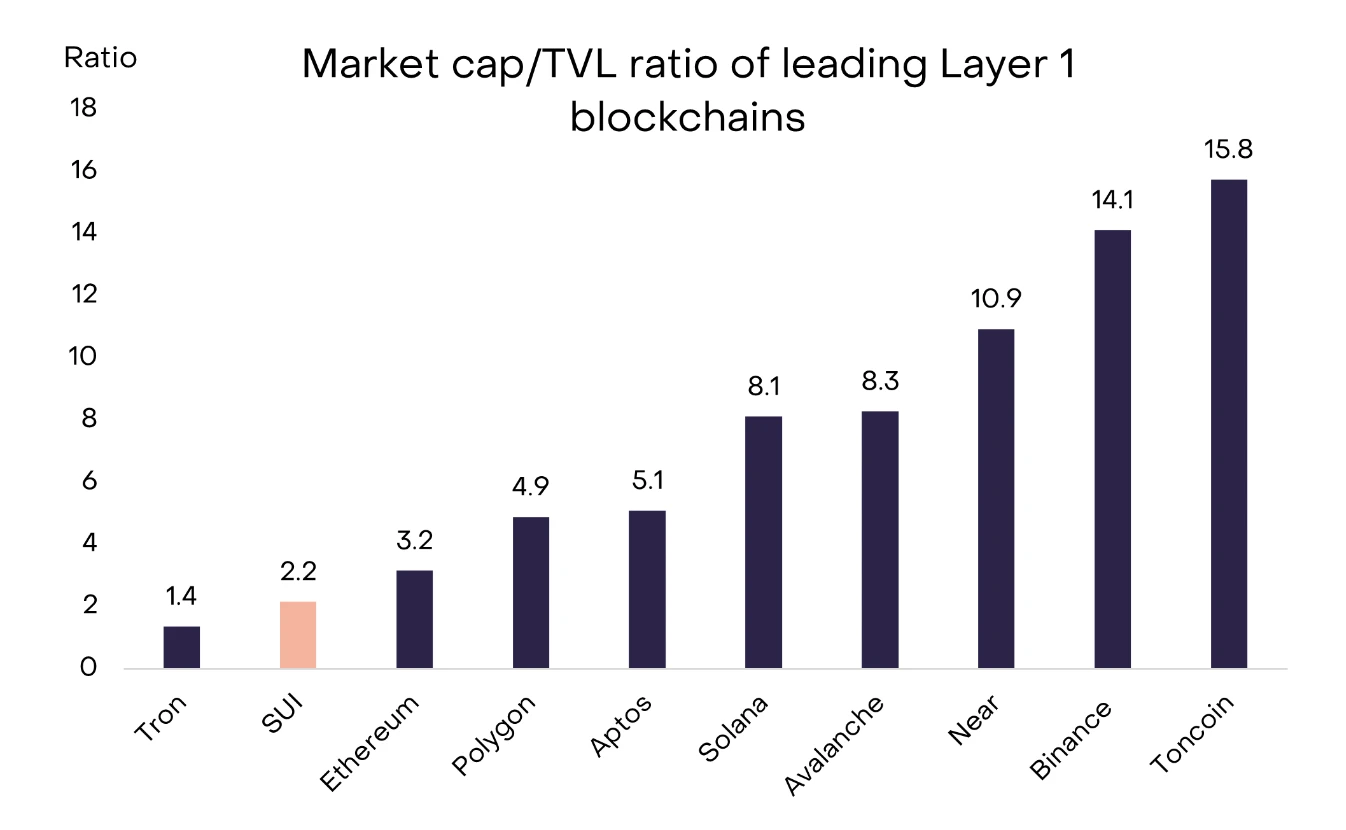
Next, lets look at the transaction volume. This data represents whether DeFi participants are willing to use on-chain liquidity and can be used to effectively test network activity. The report mentioned that as of the end of March, Suis on-chain transaction volume also ranked among the top ten in the market. By verifying the latest data from DefiLlama, Sui is still in the top ten. As of the time of writing, Suis on-chain daily transaction volume was reported at US$59.58 million, and its weekly transaction volume was reported at US$424 million, an increase of 22.48% over the previous week. It is the only network among the top ten networks that maintained an increase this week.
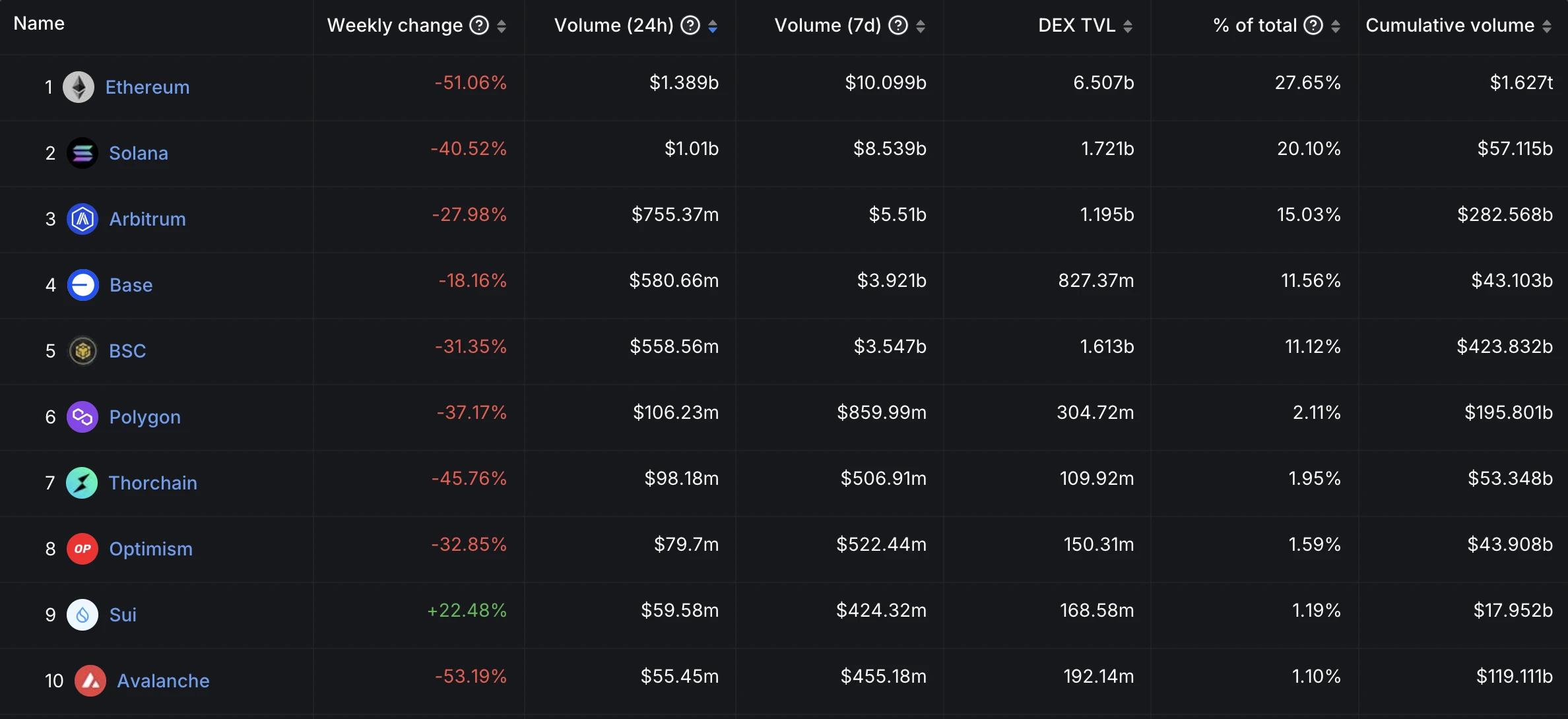
Finally, lets look at the amount of funds. Although this data is not as commonly used for market analysis as TVL and transaction volume, it can be used as a very accurate indicator to evaluate the development trend of ecological sub-projects . From the figure below, we can clearly see that although stablecoins have always been the largest asset category on the Sui network (Note: mainly stablecoins using Wormhole bridges), the SUI token itself and ecological native tokens including CETUS, NAVX, etc. have shown a clear trend of share erosion - DefiLlamas latest data also shows that the value of stablecoins on the Sui chain has dropped to about 50% - this means that in addition to SUI itself, the native tokens issued by its ecological protocol are also realizing price discovery simultaneously.
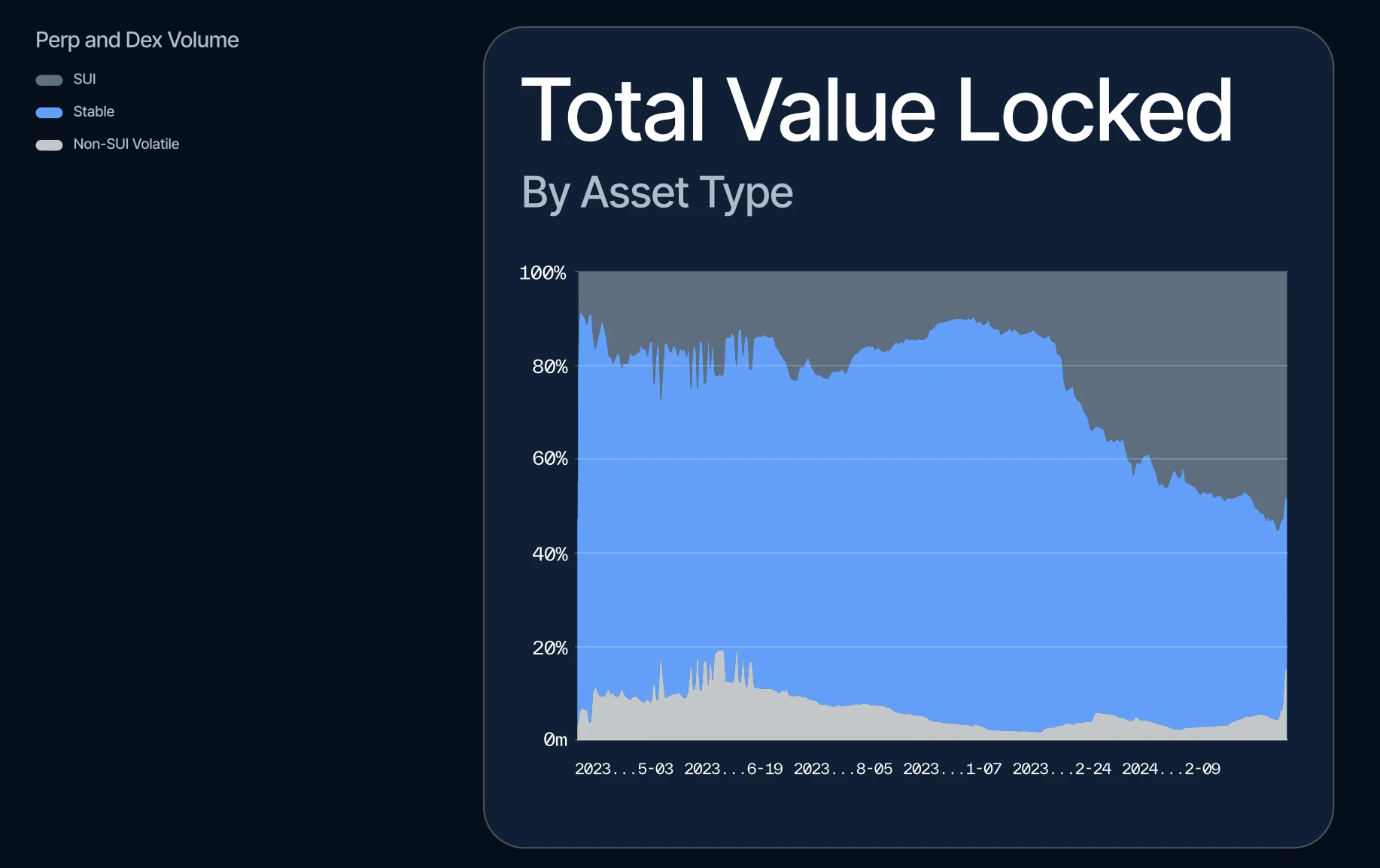
The underlying advantages are beginning to show their edge
The fundamental reason why Sui can ensure the continuous development of its own business during the relatively sluggish period of the DeFi industry is that Suis network architecture and contract language (Move) are naturally adaptable to DeFi business. In the above report, Sui is elaborated in detail on three aspects: performance and cost, parallel architecture, and development experience.
In terms of performance, Sui has the fastest consensus engine among all Layer 1/Layer 2. At the same time, Sui has begun to use Mysticeti to gradually replace the original Narwhal consensus engine, achieving a confirmation speed of about 0.64 milliseconds , thereby ensuring that all on-chain transactions can be executed at an extremely fast speed - especially under extreme market conditions, the advantage in transaction confirmation speed will ensure that users can complete expected operations in a timely manner and ensure that the protocol can effectively execute liquidations. In addition, the transaction fees on the Sui network are almost negligible, which makes it easy for users to freely explore major applications on the network without worrying too much about cost.
The significance of the parallel architecture is that Sui can ensure that transactions in different applications and application scenarios can be executed simultaneously, thereby significantly improving the overall transaction execution efficiency of the network . At present, the underlying network in the industry generally adopts a single-line architecture, which ensures that transactions and smart contracts can be executed in a deterministic order, making it easier to manage and predict the state of the blockchain, which helps to ensure the security of the network, but also limits the transaction execution efficiency of the network and restricts the networks expansion space. Relatively speaking, the parallel architecture means that multiple independent transactions can be executed in parallel. In terms of user experience, this means that independent transactions across different applications and different liquidity pools within the same application can be executed simultaneously, and transactions will not interfere with each other, thereby greatly improving the execution efficiency of transactions.
In terms of development experience, the comprehensive tool support provided by Sui can help developers effectively reduce the workload required when building new products and iterating products . In addition, the natural security of Move also allows developers to build applications based on Sui without the risk constraints of other smart contract languages , so that they can explore various applications more freely, thus having greater freedom in protocol design.
Ecological projects, continuous action
While Sui itself continues to attract attention, major projects in the Sui ecosystem are also focusing their efforts, and many leading projects have recently ushered in key developments.
On August 9, SuiNS, the domain name service of Sui ecosystem, announced its reorganization into a decentralized protocol and announced the launch of the governance token NS. On August 12, Sui ecosystem lending project Suilend announced the new Sui liquidity pledge standard SpringSui. NAVI, Scallop and others are continuing to use their attractive yields to push TVL to break through milestones one after another...
In the official report, Sui divides the projects of the ecosystem into five categories based on different business directions: liquidity pledge agreement, decentralized exchange, lending agreement, debt collateral position, and derivatives, and selects several high-quality representative projects in each category. For new users who intend to enter the Sui ecosystem from now on, they may wish to start with this batch of representative projects and experience the network advantages of Sui in person.
Liquidity staking protocols: Aftermath, Haedal, Volo;
Decentralized exchanges: Cetus, Aftermath, Kriya, FlowX;
Lending protocols: Scallop, NAVI, Suilend;
Debt-collateralized position: Bucket;
Derivatives: BlueFin, Typus Finance.
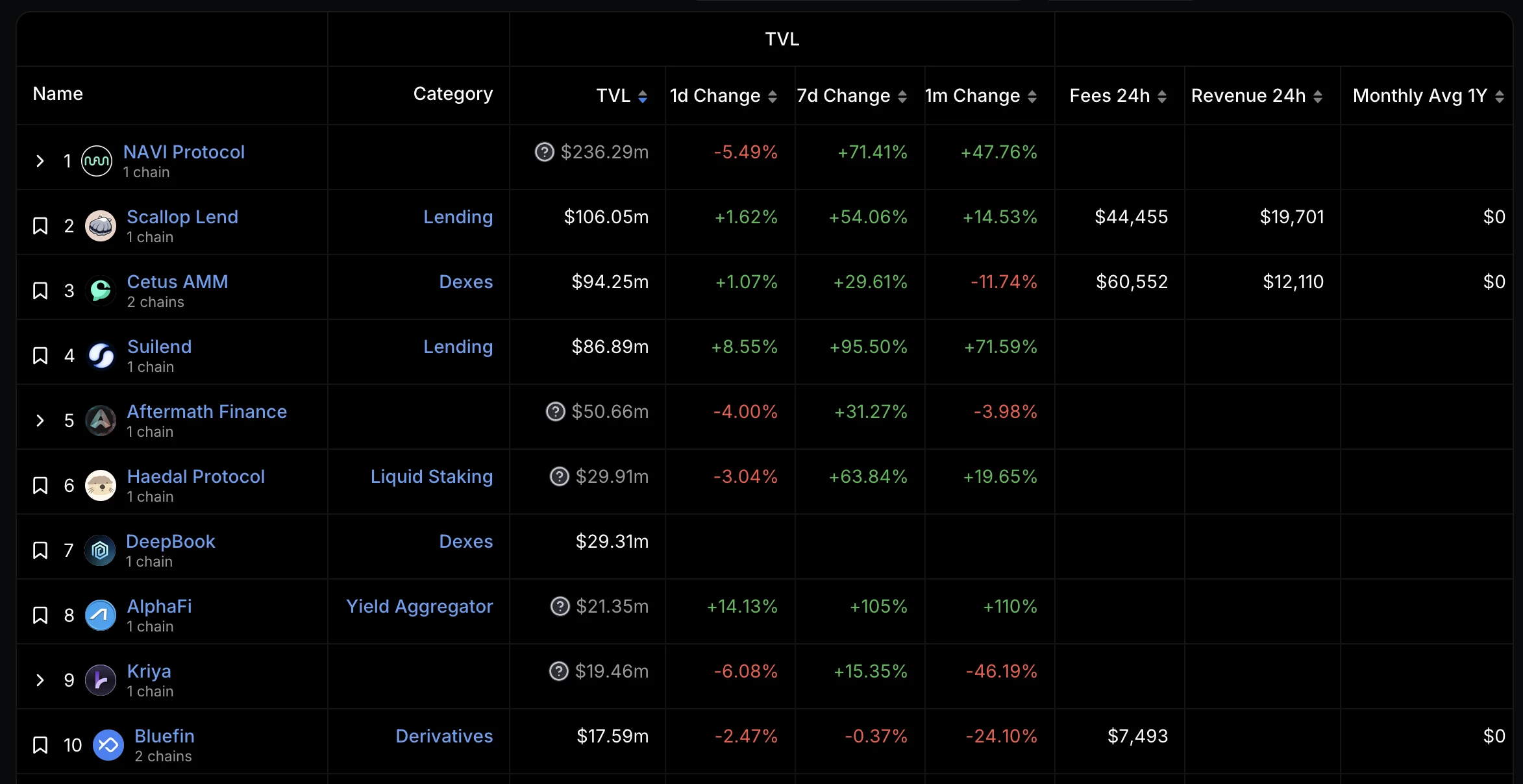
From the perspective of TVL, NAVI, Scallop, Cetus, Suilend, and Aftermath are ranked in the top five of Sui ecosystem. Based on my personal experience, I currently have loan positions on NAVI and Scallop. With the additional liquidity incentives of SUI, pure stablecoin deposits can get a considerable return of 20% +.
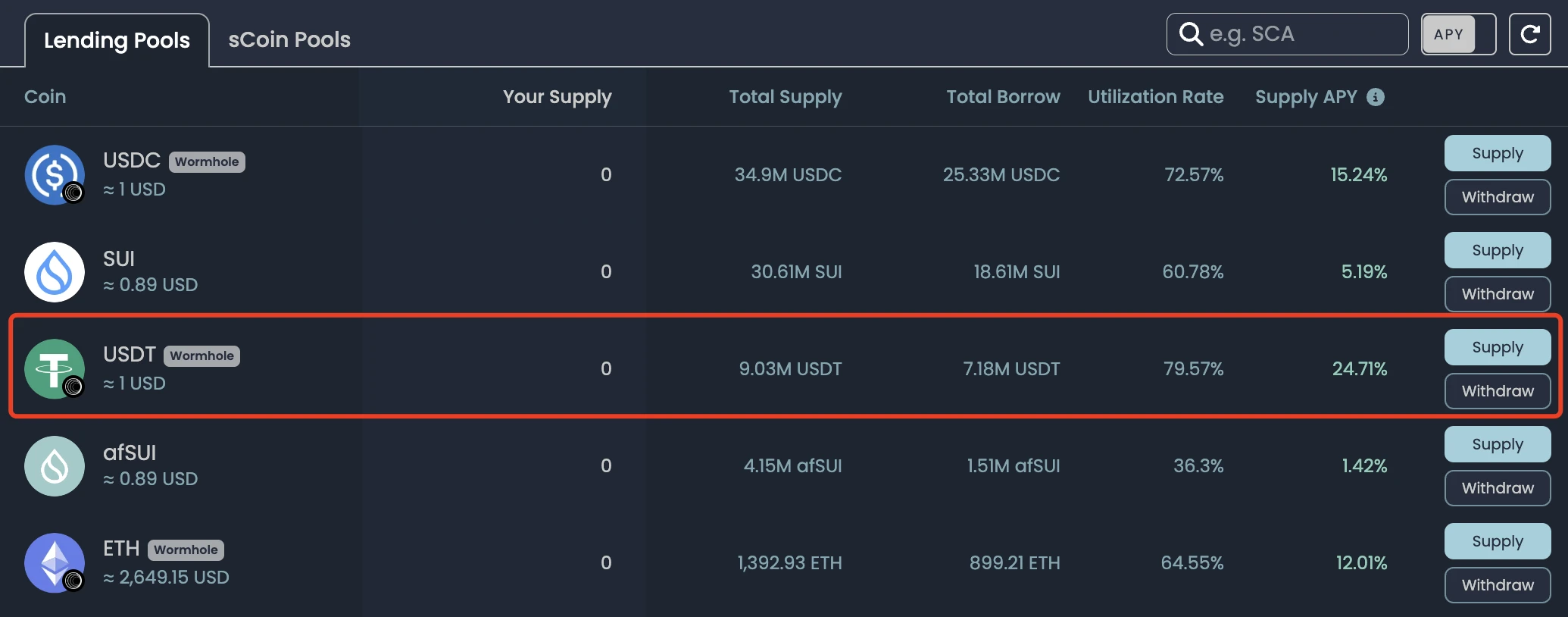
It’s too early to lead Layer 1, but Sui can’t be underestimated
Finally, returning to a community opinion mentioned at the beginning of this article, can Sui play a role in this cycle similar to Solana in the previous cycle and lead Layer 1 to achieve a breakthrough in a new cycle?
Under the support of KOLs such as Raoul Pal, founder and CEO of Real Vision, various comments on CT to promote Sui have become rampant. However, in our opinion, although Sui has shown a relatively strong and sustainable development trend, objectively speaking, Sui still has a certain gap compared with old ecosystems such as Solana in terms of users, developers, liquidity, project categories, etc., which require time to accumulate. Therefore, it is not reasonable to directly define Sui as Solana in the new cycle at this stage, and it may even cause backlash when the already fast development speed still cannot match the overly aggressive expectations.
But on the other hand, Sui has demonstrated unique advantages in terms of underlying features, network stability, user experience, etc. These advantages will become the core power of Sui, helping the ecosystem to go through the path of the old generation of Layer 1/Layer 2 at a faster speed . That is why we are still willing to stick to Suis future development with relatively reasonable expectations, and believe that it has the opportunity to become the Layer 1 that best meets market demand and is most likely to break through the siege in the new cycle.










